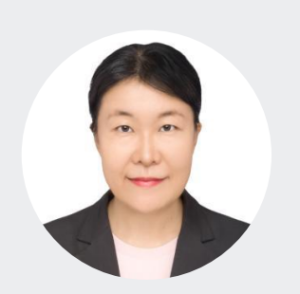Written by Mekong Institute
The study “A value chain analysis of coffee in Quang Tri Province” was carried out in Quang Tri Province, Vietnam from 27 March to 9 April with aims to provide understanding about the coffee value chain with regards to stakeholders engaging in the value chain and their relationship, product flow, information and knowledge flow, cost and profit patterns of value chain actors as well as factors that affect the chain such as input and logistic service, infrastructure and technology. Additionally, socio-economic factors (i.e. gender, ethnicity and poverty) are also addressed. The study serves to provide information based on which the interventions for the project “Capacity Development for a More Inclusive and Equitable Growth in the Greater Mekong Sub-region Project” funded by the Swiss Agency for Development and Cooperation (SDC).
The study employs both qualitative and quantitative methods. Structured interviews were conducted with value chain actors (i.e. exporters, processors, collectors and farmers) on such issues as cost and profit information, productivity, resource access, marketing, policy and regulations as well as problems and constraints. In-depth interview was carried out with the supporters to understand their functions, roles and responsibilities. Focal group discussion was used to understand about the role of gender in coffee production, such as division of labor, livelihood strategies, financial decision-making and constraints and issues in the coffee production of the different social groups.
While up to 95 percent of coffee produced in Vietnam is Robusta, coffee in Huong Hoa district, Quang Tri province is mostly Arabica (Catimor variety) and a small amount of Liberica coffee. The weather in the district is favorable for the coffee variety because it rains in April – when coffee plants are in blossom. This is the reason why farmers can still produce coffee while there is no irrigation system in the area. As harvest season falls from late September – December when there is limited sunshine, coffee cherry here undergo wet processing – which is more costly but better in quality control compared with dry processing method. Coffee in Huong Hoa also follows 4C and UTZ standards. Most coffee green bean is exported to EU market (e.g. Germany, Netherland, etc). Some goes to America and Japan market. Coffee is mainly exported in form of green bean in 60kg sack. Coffee sector receives considerable supports from government because it is in line with the poverty alleviation for ethnic minority in Vietnam while many of coffee producers in Huong Hoa district belong to the ethnic minority and the poor group.
However, coffee sector in Huong Hoa district is faced with a number of constraints. First, the yield of coffee is rather low (only 10 tons of cherry/ hectare on average according to 2012 annual report of Huong Hoa District Department of Agriculture, while it can reach to 20 tons of cherry/hectare under proper cultivation techniques). One of the reasons is that about half of the coffee area is old (around 15-18 years) and need to be replaced. Especially, the coffee yield of Bru-Van Kieu farmers is even much lower due to the fact that they cannot afford to buy as much fertilizer as recommended. These are also the reasons hampering coffee quality. In terms of volume, the demand of processors is more than what producers can supply. On the one hand, this leads to high depreciation cost of the processor as their processing machines are only used during the harvesting season. On the other hand, the farmers have no incentive to produce good quality coffee cherry because processors would buy whatever quality to feed their machine. It is reported that farmers pick high percentage of green cherry than being allowed (5 percent of green cherry at maximum). They also put the coffee cherry into water to make it heavier. Fortunately, the situation is getting much better with the initiative of Inter-department Committee for Tax and Environment Regulation in Agricultural Trade by the Huong Hoa District’s People Committee.
Inaddition, there is weak linkage among different actors in the value chain to share information, commitments and risks. Farmers lack of knowledge on export quality requirements and commitments to quality standard. Processors also reported that they lack of knowledge on quality testing. Meanwhile, both actors have little information on market price and customers’ preferences in export market. They also have limited voice in price determination. As Arabica Catimor coffee in Vietnam is mainly for exports, the sector depends largely on international market. In the downturn of international coffee market, the coffee exporters in Quang Tri province also have to face with a lot of challenges.
In this regards, it will require different tailor-made capacity building packages and awareness raising activities for all actors in the value chain – farmers, collectors, processors and exporters – together with the government officers who regulate the sectors. For example, capacity building on production techniques (especially using certified seedlings and organic fertilizer) and farmer group formation targets to farmers; capacity building on product development, entrepreneurship and SMEs cluster for processors and exporters; capacity building on GAP, GMP and facilitation skills for government officers. Structure learning visit on contract farming may be a cross-cut topic for all actors as means of both knowledge and awareness raising. In so doing, the productivity and quality of coffee producers and processors will be enhanced. Meanwhile, market system is better regulated when the capacity of the officers who involved in local economic development is increased. In this manner, the value chain actors will be able to integrate more in regional and global value chain, increase their income and contribute to local and regional economic development.


